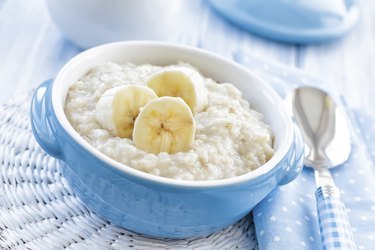Let’s know the ‘4000 Calories Nutrition Guide By Dietician’ Dietary Guidelines for Americans 2010, published by the U.S. Department of Agriculture, state that an average adult needs 1,600 to 2,000 calories per day for women and 2,000 to 3,000 calories per day for males.
In general, 4,500 calories is twice as many as even moderately active men and women need in a single meal. Too many carbs cause a severe insulin rise that causes extra calories to be stored as fat, which can take one or two weeks of healthy nutrition to restore.
Those who are extremely active or those who have health concerns should only follow a 4,000-calorie diet on a doctor’s advice.
How much protein, carbohydrate, and fat you should consume each day can also be advised by your doctor. Reaching your caloric objectives will be challenging anyway; while it may be tempting to indulge in fast food, whole foods are more nutritious and help maintain your 4,000-calorie diet balanced.
Check Out the 4000 Calories Nutrition Guide By Dietician
Number of Meals
On a 4,000-calorie diet, the customary three meals per day might not be as effective because you need about 1,333 calories in every meal to meet your objectives. If you divide your daily calorie intake into five meals, each one will be 800 calories less overwhelming. Your serving sizes get even lower when you eat roughly every two hours, which results in eight meals each day.
The number of meals you consume each day ultimately depends on your schedule and personal preferences.
For instance, it is probably more difficult to find time for eating eight meals on a rigid schedule than it is to find time for five larger meals.
Calorie Density
The greatest way to consume 4,000 calories per day without feeling overstuffed or overwhelmed by the amount of food is to eat calorie-dense foods. They frequently consist of foods that are richer in fat or carbohydrates; examples include almonds, avocados, oats, eggs, peanut butter, whole-grain bread, and other fatty meals.
Contrarily, foods with higher water content and fewer calories include lettuce, spinach, tomatoes, and egg whites. For comparison, 123 tomatoes have 4,029 calories, whereas 12.5 avocados have 4,020 calories.
You can easily meet your daily goal if you include at least one calorically dense food in each of your meals.
Sample Menu
4 036 calories, 194 grams of protein, 84 grams of fiber, 409 grams of carbs, and 188.5 grams of mostly heart-healthy fats are found in the following sample menu:
Breakfast contains 840 calories, 46 grams of protein, 14 grams of fiber, 85 grams of carbohydrates, and 32.5 grams of fat from 1 cup of granola, 1/2 cup of 2 percent cottage cheese, and 1 cup of halved strawberries.
First Snack: 849 calories, 27 grams of protein, 17 grams of fiber, 77 grams of carbohydrates, and 54 grams of fat from 1 cup of cooked oats, 4 tablespoons of creamy almond butter, 1 large banana, and 1 ounce of almonds.
Lunch consists of two large pieces of multigrain bread, four ounces of skinless chicken breast, an avocado, and one ounce of dark chocolate. This meal has 889 calories, 52 grams of protein, 22 grams of fiber, 68 grams of carbohydrates, and 48 grams of fat.
Second Snack: One whole-grain bagel with three tablespoons of creamy peanut butter. This snack contains 527 calories, 22 grams of protein, seven grams of fiber, 57 grams of carbohydrates, and 25.5 grams of fat.
Dinner contains 3 ounces of sirloin steak, a big sweet potato, 1 cup of cooked brown rice, 1 tablespoon of olive oil, 24 grams of fiber, 47 grams of protein, 122 grams of carbohydrates, and 28.5 grams of fat, totaling 931 calories.
Keeping Track
You may achieve your daily caloric goal of 4,000 calories by keeping track of each meal, snack, and calorie-containing beverage. Even if it initially seems difficult, keeping track of your meals becomes simpler over time. Depending on your lifestyle, choose between using a notepad or an internet program.
The U.S. Department of Agriculture National Nutrient Database is an excellent place to start, although many calorie-counting apps have their own databases. Since the majority of whole foods lack a nutrition label, you’ll need to conduct an online search to determine their caloric contents.
Planning your meals for the day in the morning, the night before, or for the entire week can speed up your procedure if recording each meal as you consume it takes too much time.
Also Read: Effects Of Consuming Japanese Teriyaki Sauce
Some FAQs
How can I consume 4000 calories a day?
The greatest way you consume 4,000 calories per day without feeling overstuffed or overwhelmed by the amount of food is to eat calorie-dense foods. They frequently consist of foods that are richer in fat or carbohydrates; examples include almonds, avocados, oats, eggs, peanut butter, whole-grain bread, and other fatty meals.
Is 4500 Calories too much?
In general, 4,500 calories is twice as many as even moderately active men and women need in a single meal. Too many carbs cause a severe insulin rise that causes extra calories to be stored as fat, which can take one or two weeks of healthy nutrition to restore.




